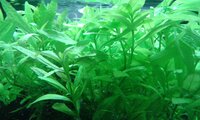Hi there,
Many people confuse the role of the premium substrates, reason why they are overestimated, in some cases, and underestimated, in others.
It is fully true that you can grow practically any plant in plain gravel if you have dosage of ferts in column. The reason is pretty obvious: Plants are not taking nutrients from a solid state but dissolved into water, whenever this absorption happens at root level or leaf level.
The reason to use them is not associated to that. The role of the premium substrates, however, is to provide stability to the tank through their CEC properties. CEC or Cation Exchange Capability is something most gravels do have in very low values (apart from some provided by Seachem, so far I am aware of). The advantage of a high CEC is that works as a storage of ions (mainly cations, that is why the name) with a high mobility, i.e. easier for the plants to use. The factors determining such mobility are the relative concentration of the ions between soil and water, and the pH.
For instance, ions being commonly stored into a soil with a high CEC are potassium, ammonium, calcium, magnessium, iron, copper, aluminium, zinc, rubidium, chlorine and even phosphates, but at much less level than others. When these ions are at high concentration in water, vacancies into the electrostatic positions of the soil are filled with them, usually involving exchange of protons by cations. When these concentrations go down in water, the soil release these ions to the interstitial water, making them available for plants and filling the vacancies with protons (for cations). Additionally, a few premium sols include humic acids, which have a very high CEC but they are also very mobile in water, and they significantly improve the transference of ions between soil and roots.
So, essentially, premium soils act as a buffer of certain nutrients, regulating their concentration into the aquarium, and hence, giving stability. They also cover for any temporal unadvertised deficiency of these elements. This does not mean that you need them to be successful with plants, but it means, for example, that you have less chances of misteps, reason why they can be a difference between success or failure. Obviously, dedicated aquascapers or green fingers do not have such a problem, as controlled fertilizing plan fix the issue. But in general terms, it just makes easier the task. That is why they are so popular nowadays. It is not just a marketing thing.
Cheers,
Manuel



